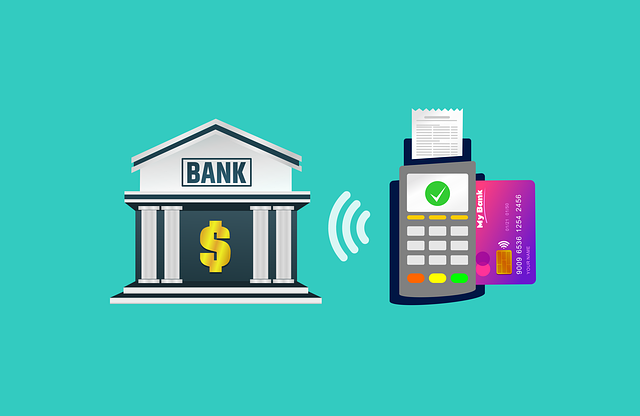Category: Top Lenders for Small Business Equipment
Top Lenders for Small Business Equipment: Empowering Entrepreneurs Through Financial Access
Introduction
In the dynamic world of small business ownership, access to capital is a cornerstone of success. Among various financial options, equipment financing has emerged as a powerful tool for entrepreneurs seeking to acquire and upgrade vital assets. This article delves into the concept of “Top Lenders for Small Business Equipment,” exploring who they are, their role, and the significant impact they have on fostering economic growth and supporting small businesses worldwide. By the end, readers will gain a comprehensive understanding of this critical aspect of modern business financing.
Understanding Top Lenders for Small Business Equipment
Definition and Core Components
“Top Lenders for Small Business Equipment” refers to financial institutions specializing in providing loans and leasing options to small businesses primarily for the purpose of acquiring or upgrading essential equipment, machinery, vehicles, or technology. These lenders offer tailored financial solutions that align with the unique needs of smaller enterprises, often characterized by more limited credit histories and lower loan amounts compared to larger corporations.
Key components include:
- Equipment Financing Loans: Direct lending models where businesses borrow funds to purchase specific equipment, with the lender securing a lien on the asset until repayment.
- Leasing Arrangements: Businesses rent equipment for a fixed period, often with an option to purchase at the end, providing flexibility and immediate access to desired assets.
- Specialized Financial Services: Top lenders offer additional support like maintenance plans, insurance options, and expert consulting to streamline equipment ownership.
Historical Context and Significance
The concept of equipment financing has evolved over centuries, reflecting the changing needs of businesses and economies. Historically, small businesses often relied on personal savings or traditional bank loans to acquire assets. However, as industries became more specialized and technology advanced, the need for dedicated equipment financing emerged.
In the late 20th century, the rise of lean manufacturing and just-in-time inventory management highlighted the importance of efficient equipment utilization. This led to the growth of equipment leasing as a popular alternative to ownership, offering businesses flexibility and the ability to upgrade quickly. Today, top lenders play a pivotal role in:
- Facilitating Business Expansion: They enable small businesses to invest in modern equipment, enhancing productivity and competitiveness.
- Reducing Financial Risk: Leasing provides businesses with lower upfront costs and the option to return or upgrade equipment, mitigating financial burden.
- Promoting Economic Growth: By supporting small business growth, these lenders contribute to overall economic vitality and job creation.
Global Impact and Trends
International Influence
The concept of top lenders for small business equipment has transcended national borders, gaining global recognition as a vital component of entrepreneurial support. According to a 2022 report by the Global Equipment Finance Association (GEFA), the global equipment finance market reached a staggering $1.3 trillion in 2021, demonstrating its significant international impact.
Regional Trends and Disparities
Equipment financing trends vary across regions, influenced by economic conditions, local business cultures, and regulatory environments:
- North America: The United States and Canada lead in equipment finance adoption, driven by a robust small business ecosystem and favorable regulatory frameworks.
- Europe: The European Union (EU) has seen steady growth, with countries like Germany and the UK being major players due to their advanced industrial sectors.
- Asia Pacific: Rapid industrialization in nations like China and India is fueling equipment financing demand, with local lenders adapting to meet specific regional needs.
- Emerging Markets: Countries in Africa and South America are witnessing increased interest, as small businesses seek access to modern technology and infrastructure.
Economic Considerations
Market Dynamics
The small business equipment lending market operates within a dynamic economic ecosystem:
- Supply and Demand: Lenders offer financing options for a wide range of equipment, from office machinery to heavy industrial machines, catering to diverse business needs.
- Interest Rates: Market interest rates significantly impact loan terms, with fluctuations affecting both lenders and borrowers.
- Economic Cycles: During economic booms, demand for equipment financing tends to rise, while recessions may lead to tighter lending standards and reduced borrowing.
Investment Patterns
Top lenders employ strategic investment approaches:
- Portfolio Diversification: They spread risk by financing a diverse range of industries and equipment types, ensuring stability in their portfolios.
- Risk Assessment Models: Lenders utilize sophisticated analytics to evaluate business creditworthiness, project cash flows, and determine optimal loan terms.
- Partnerships with Manufacturers: Collaborating with equipment manufacturers allows lenders to offer competitive pricing, extended warranties, and integrated solutions.
Economic System Integration
These lending institutions play a crucial role in fostering economic growth:
- Job Creation: By supporting small business expansion, they contribute to job generation, driving local economies.
- Innovation and Technology Transfer: Equipment financing encourages businesses to adopt modern technologies, fostering innovation and enhancing productivity.
- Infrastructure Development: Financing for construction and transportation equipment contributes to the development of physical infrastructure, benefiting communities.
Key Players and Services
Traditional Banks vs. Specialized Lenders
The landscape includes both traditional banks and specialized financial institutions:
- Traditional Banks: Major financial institutions offer equipment financing as part of their comprehensive lending portfolios, catering to a wide range of borrowers.
- Specialized Equipment Lenders: These firms focus exclusively on small business equipment financing, providing tailored services and expertise.
Additional Services Offered
Top lenders differentiate themselves through comprehensive support:
- Customized Financing Solutions: They offer flexible loan structures, including fixed or variable interest rates, to suit diverse business needs.
- Asset Management: Lenders assist in equipment maintenance, repair, and replacement, ensuring optimal asset performance.
- Insurance and Warranty: Extended warranties and insurance plans protect businesses from unforeseen events related to equipment ownership.
- Consulting Services: Some lenders provide expert advice on equipment selection, financial planning, and operational efficiency.
Benefits for Small Businesses
Access to Capital
The primary advantage is providing small businesses with access to the capital required for significant equipment investments. This enables entrepreneurs to:
- Acquire state-of-the-art technology.
- Expand their operations.
- Replace outdated machinery, improving productivity and efficiency.
Flexibility and Lower Costs
Leasing arrangements offer businesses flexibility by allowing them to:
- Upgrade equipment without a substantial upfront cost.
- Spread payments over time, aligning with cash flow patterns.
- Avoid maintenance burdens and potential repair costs.
Improved Cash Flow Management
Equipment financing can help small businesses manage their cash flows more effectively by:
- Distributing loan payments over the life of the equipment.
- Freeing up working capital for other business needs.
- Reducing financial strain during initial investment phases.
Tax Advantages
In many jurisdictions, interest on equipment loans and leases is tax-deductible, providing businesses with significant tax benefits. This can enhance their overall profitability.
Challenges and Considerations
Regulatory Compliance
Lenders must navigate complex regulatory landscapes, ensuring compliance with:
- Loan Origination Standards: Adhering to fair lending practices and disclosure requirements.
- Secured Lending Rules: Protecting lenders’ interests through collateral agreements and debt collection procedures.
- Anti-Money Laundering (AML) and Know Your Customer (KYC) Regulations: Implementing robust due diligence processes.
Credit Risk Management
Assessing and mitigating credit risk is critical:
- Business Creditworthiness Evaluation: Lenders employ detailed analysis to gauge business stability and repayment capacity.
- Collateral Valuation: Accurately valuing collateral, such as equipment or real estate, ensures lender protection.
- Risk Diversification: Spreading investments across industries and regions reduces concentration risk.
Market Competition
The market is highly competitive, with lenders vying for customers through attractive rates, flexible terms, and value-added services. Staying profitable while maintaining a strong market position is an ongoing challenge.
Future Trends and Innovations
Technology Integration
The future of equipment financing is likely to be shaped by technological advancements:
- Digital Lending Platforms: Online platforms streamline loan applications, underwriting, and document management, enhancing accessibility.
- Blockchain for Transparency: Blockchain technology can improve transparency and security in collateral management and transaction records.
- Artificial Intelligence (AI) in Risk Assessment: AI algorithms enhance credit scoring and risk modeling, enabling more precise lending decisions.
Sustainable Financing Options
As environmental concerns grow, sustainable equipment financing is gaining traction:
- Green Equipment Loans: Lenders are offering specialized financing for energy-efficient or environmentally friendly assets.
- Recycling and Refinancing Programs: Encouraging businesses to upgrade old equipment with eco-friendly alternatives through innovative leasing programs.
Data Analytics for Personalization
Advanced analytics will enable lenders to:
- Offer personalized financing options based on individual business profiles and behavior patterns.
- Predict equipment failure and maintenance needs, providing proactive solutions.
- Enhance customer retention through tailored services and offers.
Conclusion
“Top Lenders for Small Business Equipment” represent a critical link in the chain of supporting entrepreneurial success. Their specialized services and financing options empower small businesses to access essential equipment, drive growth, and contribute to economic vitality. As technology evolves and global markets become more interconnected, these lenders will continue to adapt, offering innovative solutions to meet the dynamic needs of the world’s smallest businesses.









